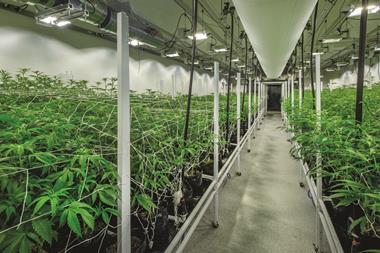Are efforts to legislate ‘legal highs’ out of existence doomed to failure?
Hard cases make bad law, so the saying goes. It seems that hard problems can also make for bad laws too. And governments around the world are faced with the particularly tricky problem of what they should do about ‘legal highs’. These synthetic psychoactive substances can alter a person’s mental state but, unlike other illegal recreational drugs, such as cannabis, the law hasn’t caught up with legal highs yet.
In recent years these substances have grown in popularity as they inhabit a shadowy legal grey area, which means they can be sold and used without fear of prosecution. In 2013, 81 new psychoactive substances were discovered being sold across Europe, a figure that has risen year-on-year from 24 in 2009.
The fight against legal highs has been an arms race – as specific compounds are added to lists of banned substances, new legal highs are synthesised in their place. When governments ban one legal high, a host of tweaked compounds are ready to replace them. Labs in China are thought to supply most of the world with these drugs, with unscrupulous chemists believed to be plundering the literature on psychiatric research to find new substances that mimic the effects of drugs such as cannabis and cocaine.
In a bid to cut through the whole tangled problem of having to identify each new psychoactive substance and then ban it, the UK government is attempting to pass a law that would outlaw anything that is psychoactive – with some exceptions of course. The bill in question describes a psychoactive substance as one that can stimulate or depress a person’s central nervous system. Medicines, controlled drugs and legal recreational drugs such as alcohol, tobacco and caffeine get a pass. As does food and drink, showing just how wide open the term ‘psychoactive’ is in this?instance.
This has led scientists and legal experts to warn that the bill is vague and poorly worded, and could, in theory, make selling something as innocuous as a bunch of flowers illegal as their scent can be considered psychoactive. There are also fears that work on developing new psychoactive compounds to treat psychiatric conditions could suffer. Then there is the law of unintended consequences. While efforts have been made to provide appropriate exemptions, manufacturers and suppliers of psychoactive chemicals – many of which are used in the lab – could become more cautious about selling them. Although big industry labs and universities are unlikely to be affected, hobbyist chemists could run into trouble.
Clearly there is a problem to be addressed here – 68 people died taking legal highs in 2012 in the UK alone (although it is worth noting that more than 6000 deaths were linked to alcohol in the same year). And the most frightening thing about legal highs is that these compounds are sold with little or no idea of their long- or short-term effects. One need only be familiar with the chilling tale of the ‘frozen addicts’ – poor synthetic techniques led to the introduction of chemical impurities in heroin, resulting in Parkinson’s disease-like symptoms in users – to be very concerned about what could be unleashed on the unsuspecting public. Will this kind of prohibition be the best way to tackle legal highs? We don’t know yet. But it’s fair to say it will probably push the trade further underground – making it harder to keep the chemistry under the spotlight.












No comments yet